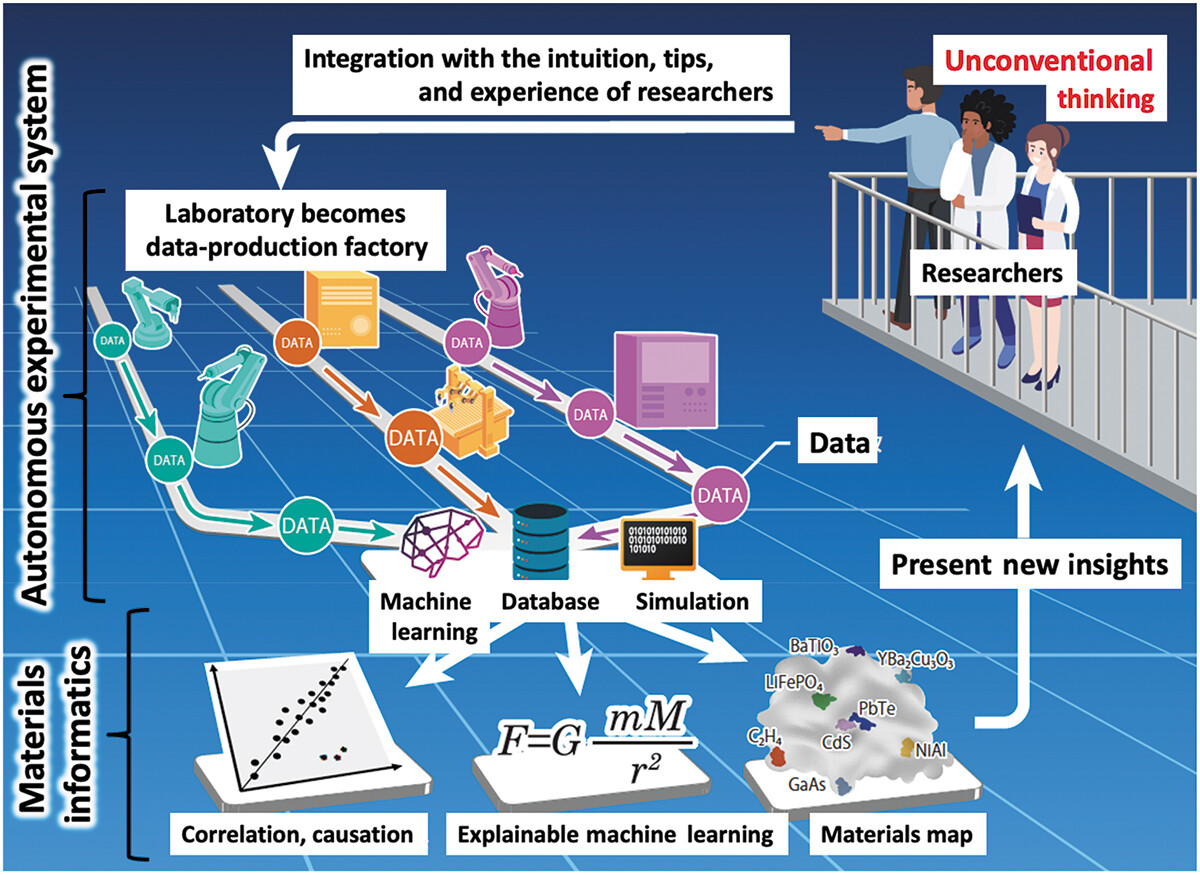Difference between revisions of "Template:Article of the week"
Shawndouglas (talk | contribs) (Updated article of the week text) |
Shawndouglas (talk | contribs) (Updated article of the week text) |
||
| Line 1: | Line 1: | ||
<div style="float: left; margin: 0.5em 0.9em 0.4em 0em;">[[File: | <div style="float: left; margin: 0.5em 0.9em 0.4em 0em;">[[File:Fig1 Ishizuki SciTechAdvMatMeth2023 3-1.jpeg|240px]]</div> | ||
'''"[[Journal: | '''"[[Journal:Autonomous experimental systems in materials science|Autonomous experimental systems in materials science]]"''' | ||
The emergence of [[Laboratory automation|autonomous experimental systems]] (AESs) integrating [[machine learning]] (ML) and robots is ushering in a paradigm shift in [[materials science]]. Using computer algorithms and robots to decide and perform all experimental steps, these systems require no human intervention. A current direction focuses on discovering unexpected materials and theories with unconventional [[research]] approaches. This article reviews the latest achievements and discusses the impact of AESs, which will fundamentally change the way we understand research. Moreover, as AESs continue to develop, the need to think about the role of human researchers becomes more pressing ... ('''[[Journal:Autonomous experimental systems in materials science|Full article...]]''')<br /> | |||
''Recently featured'': | ''Recently featured'': | ||
{{flowlist | | {{flowlist | | ||
* [[Journal:Transforming healthcare analytics with FHIR: A framework for standardizing and analyzing clinical data|Transforming healthcare analytics with FHIR: A framework for standardizing and analyzing clinical data]] | |||
* [[Journal:Laboratory automation, informatics, and artificial intelligence: Current and future perspectives in clinical microbiology|Laboratory automation, informatics, and artificial intelligence: Current and future perspectives in clinical microbiology]] | * [[Journal:Laboratory automation, informatics, and artificial intelligence: Current and future perspectives in clinical microbiology|Laboratory automation, informatics, and artificial intelligence: Current and future perspectives in clinical microbiology]] | ||
* [[Journal:Registered data-centered lab management system based on data ownership security architecture|Registered data-centered lab management system based on data ownership security architecture]] | * [[Journal:Registered data-centered lab management system based on data ownership security architecture|Registered data-centered lab management system based on data ownership security architecture]] | ||
}} | }} | ||
Revision as of 17:24, 27 November 2023
"Autonomous experimental systems in materials science"
The emergence of autonomous experimental systems (AESs) integrating machine learning (ML) and robots is ushering in a paradigm shift in materials science. Using computer algorithms and robots to decide and perform all experimental steps, these systems require no human intervention. A current direction focuses on discovering unexpected materials and theories with unconventional research approaches. This article reviews the latest achievements and discusses the impact of AESs, which will fundamentally change the way we understand research. Moreover, as AESs continue to develop, the need to think about the role of human researchers becomes more pressing ... (Full article...)
Recently featured:
- Transforming healthcare analytics with FHIR: A framework for standardizing and analyzing clinical data
- Laboratory automation, informatics, and artificial intelligence: Current and future perspectives in clinical microbiology
- Registered data-centered lab management system based on data ownership security architecture










